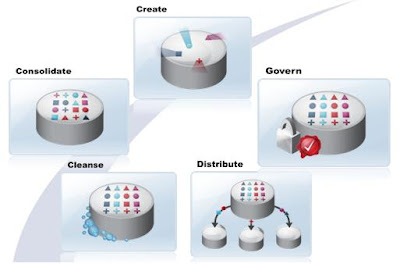In the current very cost conscious spirit in the industrial area, the MDM solutions must be optimizely designed, selected and set up. Therefore, this “Low cost solutions” approach here, meaning also that MDM principles can be supported by simple solutions (first).
With the recurrent aim of improving the quality and the accessibility of information and data (see previous posts), the centralization of common data (e.g. all the suppliers of your company) in a unique database is the simplest solutions. It obviously helps in the cleaning process, for removing duplicates and guaranteeing all the mandatory fields are available. It also hugely helps to build data hierarchy (e.g. links between holdings, mother companies, subsidiaries for suppliers).
Therefore, a technical architecture study combined with a data migration plan is often used to reach the goals. Collection of data can be done in Excel sheets and data transfer supported by functions or scripts from the destination tools.
There are specialized MDM tools supporting this centralization of data as well as gathering, cleaning and governance processes, but existing systems as ERPs, PLMs or even Intranet services finely tuned can obviously support this functionality basically.
To go on with the example of a Supplier repository, the ERP system of the company can be extended so that all business critical and world-wide relevant data are stored centrally and distributed automatically or not. A SRM system may also fit with the requirements (depending on the business) but might need to be strongly connected to the financial systems.
If centralization is the most obvious option, it is however not the only one. Because data may need to be stored separately (based on following criteria: volume, data structure, data maintenance processes, etc.) then synchronization becomes the necessary approach. Then replication, de-duplication and merging processes supported by adequate interfaces and triggers are thus required.
This sounds less integrated and more complex, but is compulsory to ensure that one data is identical everywhere and for everybody, almost in real-time.
Here also, online scripts and basic monitoring programs can trigger data transfer in xml or even flat files formats.
This idea of synchronization is also complementary to the one of centralization. The set up of a central database does not avoid the fact to distribute and synchronize information among systems. As example, if an SRM web application exists for suppliers to record their own data, this set of information must be matched with the potential existing one in the repository; even if the remaining internal data maintenance is concentrated around the central tool.
In other words centralization and synchronization of information are necessary functions to ensure consistency of data, with the MDM philosophy. They are not sufficient, as the internal organization and related maintenance processes must adapt and ward the completeness and quality of data.
More about MDM concepts & realities in a couple of months again.
Short glossary:
Duplicates: More than one data that should be unique, because the same.
ERP: Enterprise Resource Planning (Business systems)
MDM: Master Data Management (as reminder)
PLM: Product Lifecycle Management
SRM: Supplier Relationship Management
Ciao
MfS



Aucun commentaire:
Enregistrer un commentaire